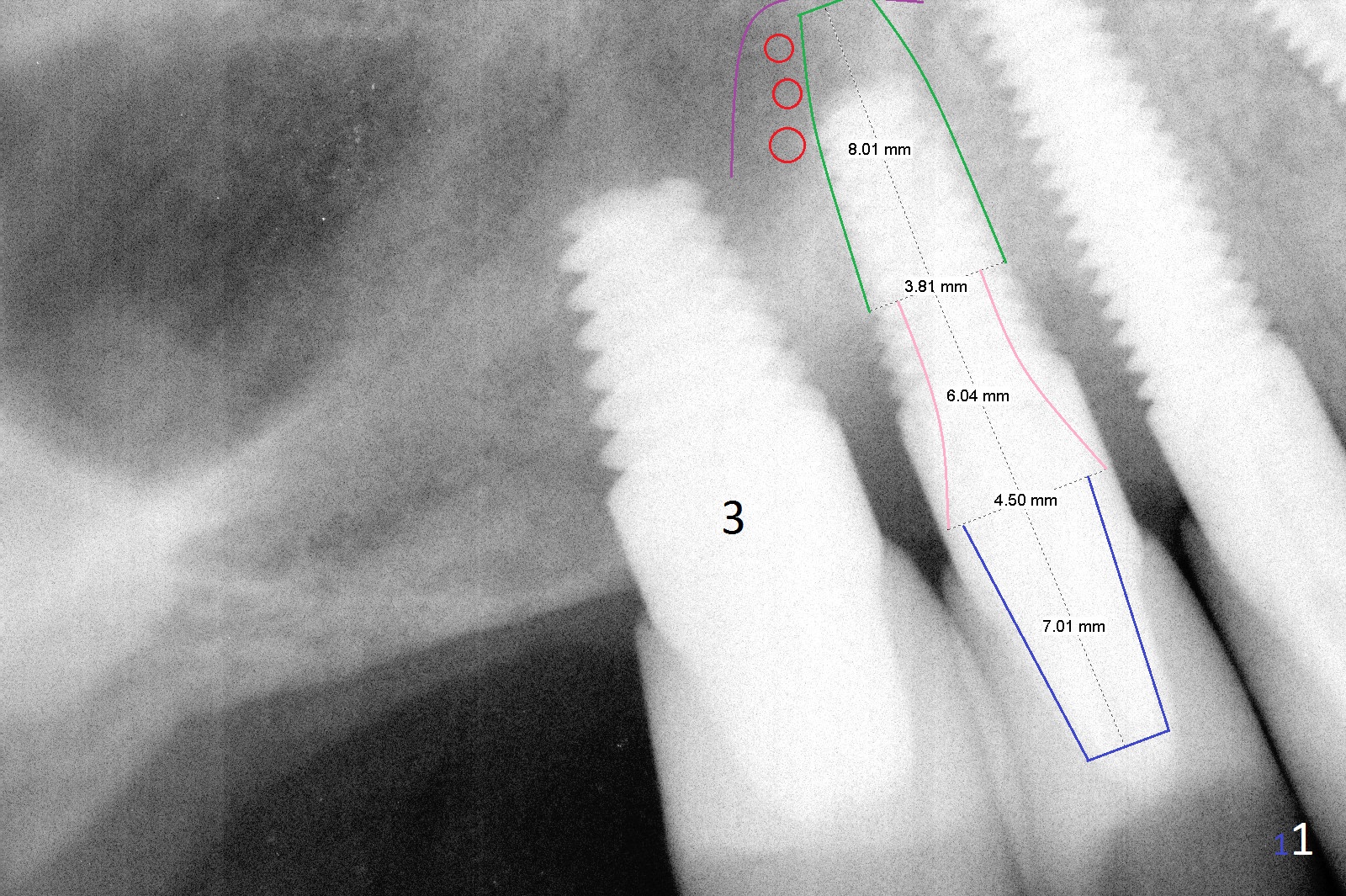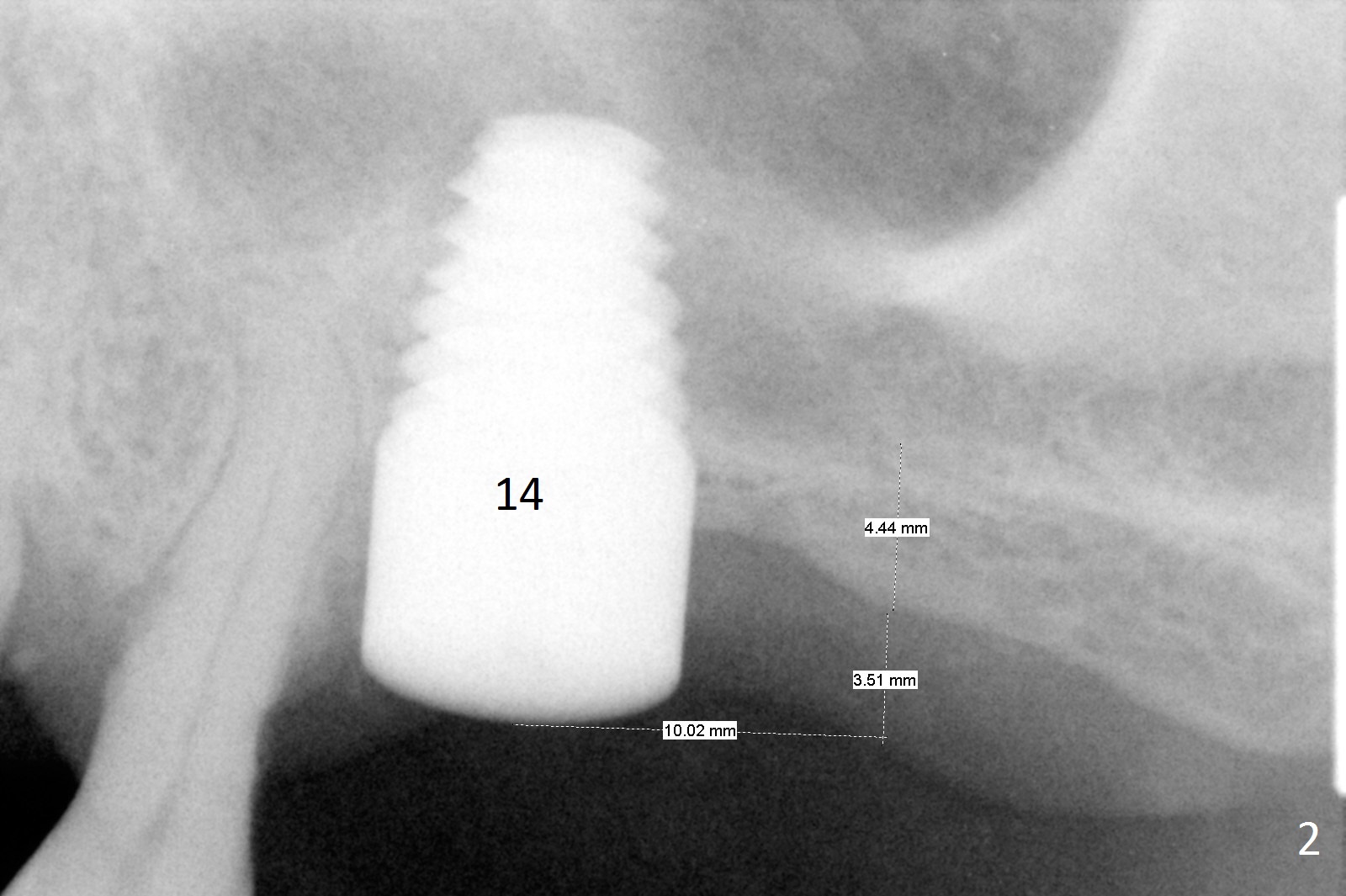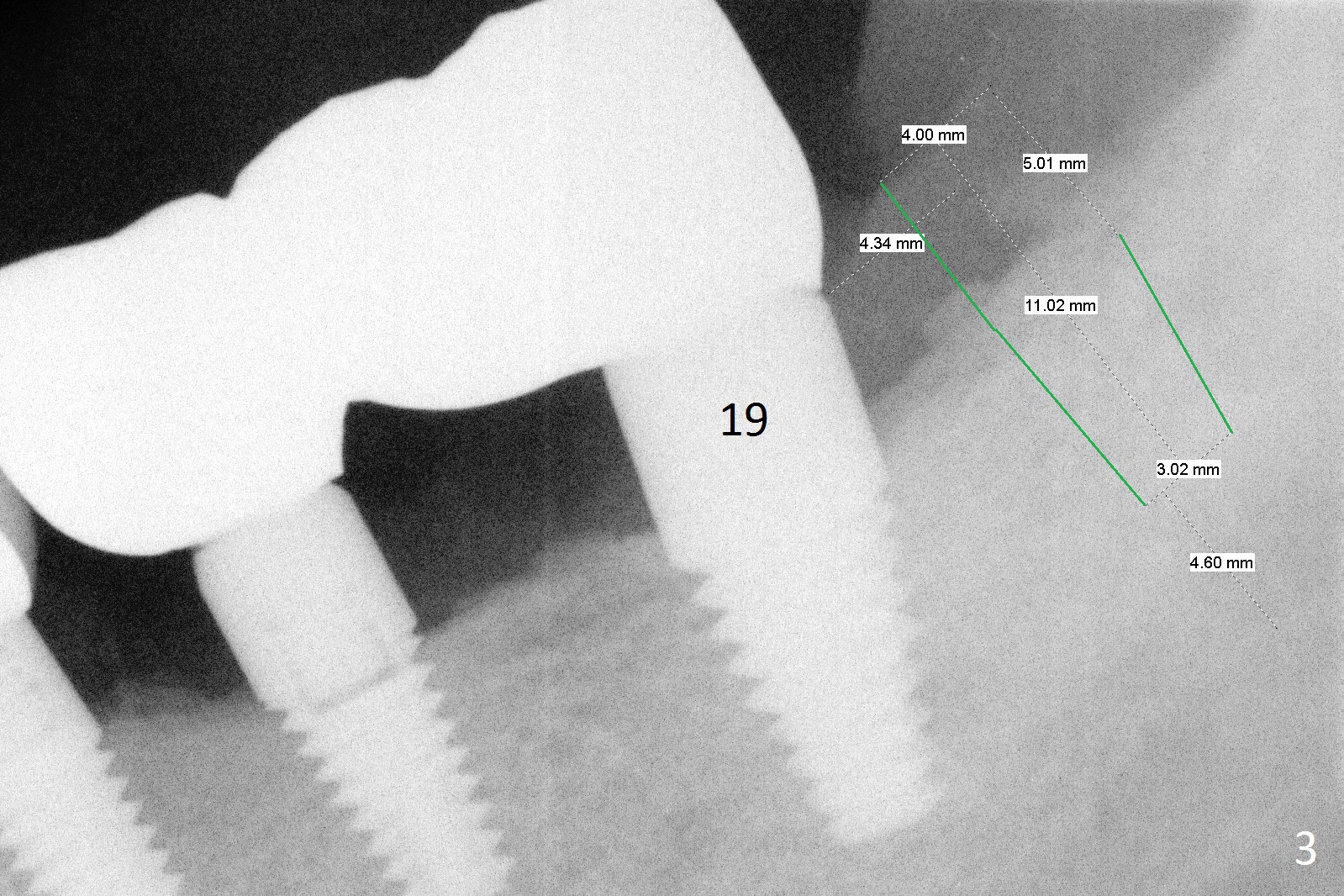


 |
 |
 |
Post-implant Complications
A 58-year-old man has two types of implant complications: periimplantitis at #4 (in spite of 2 bone graft surgeries, Fig.1) and abutment loosening at #14 and repeatedly 19 (probably due to bruxism, Fig.2,3).
For the implant #4 (4.5x14 mm), there are 2 options: exposed thread or implant removal. Either way, make an ample incision. Prepare long diamond burs. Soak several pieces of gauze in 1:1000 Epinephrine. The implant will be removed using 5/6 mm trephine bur or surgical handpiece, followed by immediate placement of a bone-level implant with the longest abutment cuff (Fig.1: 6 mm (pink)). Insert PRF (purple line, 4-5 tubes of blood) and allograft (red circles) prior to implantation. The implant/crown ratio is poor, place a long healing abutment or cemented abutment with the shortest abutment height (4 mm vs. 7 mm of the final one (Fig.1 blue, 6-8 months of healing)). If the site is unfavorable for implantation, a 3-unit bridge will be fabricated.
To overcome bruxism, implants will be placed at the 2nd molar sites (total 4). Since the implant at #19 was placed distal, the crowns at #18 and 19 will be splinted. The unipost at #14 is 6 mm, 10º cemented with Ketac (implant 8x14 mm). To increase retention, use bonding and place 1 or 2 heavy retention grooves or use a straight abutment. If the existing abutment cannot be removed, enlarge the retention groove and bury a piece of wire in the groove with bonding. The last resort will be splinting with #15.
Return to
Upper Bicuspid Immediate Implant, IBS
Xin Wei, DDS, PhD, MS 1st edition 04/21/2017, last revision 01/19/2018